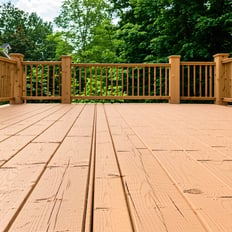 Protecting Your Deck from Insect Damage
Protecting Your Deck from Insect Damage
Your deck is more than just an extension of your home—it’s a place for family barbecues, quiet morning coffee, and warm summer evenings. But while you're enjoying the outdoors, insects could be silently undermining your investment. From termites to carpenter bees, wood-loving pests are one of the leading causes of premature deck damage.
As decking professionals serving Minnesota homeowners, Home Visions Carpentry understands the importance of taking proactive steps for deck pest prevention. Here's how you can defend your deck against unwanted guests—and preserve its beauty and strength for years to come.
1. Understand the Threat: Common Deck-Damaging Insects
To properly protect your deck, you need to know your enemy. The most common pests that damage decks include:
-
Termites – Infamous for silently destroying wood from the inside out
-
Carpenter Ants – Nest in moist wood and can tunnel through deck boards
-
Carpenter Bees – Bore into wood to create nests, often leaving visible holes
-
Powderpost Beetles – Lay eggs inside wood, and their larvae eat through it
While these insects differ in appearance and behavior, they all pose a risk to your wood deck, especially if it’s untreated or exposed to moisture.
🔗 How to Identify and Treat Wood-Boring Insects (Orkin)
2. Choose the Right Materials for Pest Resistance
One of the most effective deck pest prevention strategies begins during the construction phase. Certain materials are naturally resistant to insects:
-
Pressure-treated lumber – Infused with preservatives to deter insects and fungi 
-
Cedar and redwood – Naturally insect-resistant woods, though more expensive
-
Composite decking – Made of wood fibers and plastic, making it nearly impervious to bugs
If you're building a new deck or replacing parts of an old one, choosing the right material is a proactive step that can save you thousands in future repairs.
🔗 Choosing the Right Deck Material
3. Eliminate Moisture—The Pest Magnet
Moisture is often the gateway to insect infestations. Most wood-damaging pests are drawn to damp environments. Here's how to make your deck less inviting:
-
Ensure proper drainage – Avoid standing water near or under your deck
-
Seal the wood – Apply a quality water-resistant sealant every 1–2 years
-
Clear debris – Leaves and soil trapped under your deck trap moisture and attract pests
Sealing your deck not only protects it from rain and snow, it also acts as a barrier against burrowing insects looking for an easy entry point.
🔗 How and When to Seal Your Deck (Bob Vila)
4. Inspect Regularly—Catch Problems Early
Insects are sneaky. You might not see them until your deck boards are sagging or riddled with holes. Regular inspections—twice a year—are essential for early detection.
Here’s what to look for:
-
Hollow-sounding or soft wood
-
Tiny exit holes or sawdust-like frass
-
Mud tubes along the foundation (a sign of termites)
-
Discoloration or rot near support posts
If you suspect an infestation, consult a pest control expert immediately. The earlier you act, the less costly the repair.
🔗 Signs of Termite Damage (Terminix)
5. Keep Landscaping in Check
Overgrown landscaping can invite bugs onto your deck. Branches, mulch, or ivy that touch your deck create bridges for insects. To enhance deck pest prevention: 
-
Maintain at least 12–18 inches of clearance between vegetation and your deck
-
Avoid piling mulch directly against the deck frame
-
Trim bushes and trees regularly
This simple step not only deters insects but also improves air circulation, reducing moisture and mold.
Final Thoughts: Protect Your Deck Year-Round
Your deck is one of your home’s most valuable outdoor features. Don't let insects rob you of your comfort and curb appeal. By staying proactive with deck pest prevention, you can avoid costly repairs and enjoy your space with total peace of mind.
At Home Visions Carpentry, we specialize in building insect-resistant decks and providing smart solutions for homeowners across Minnesota. Whether you're upgrading an old structure or planning a new one, our team is here to help you design a beautiful, bug-resistant outdoor space.